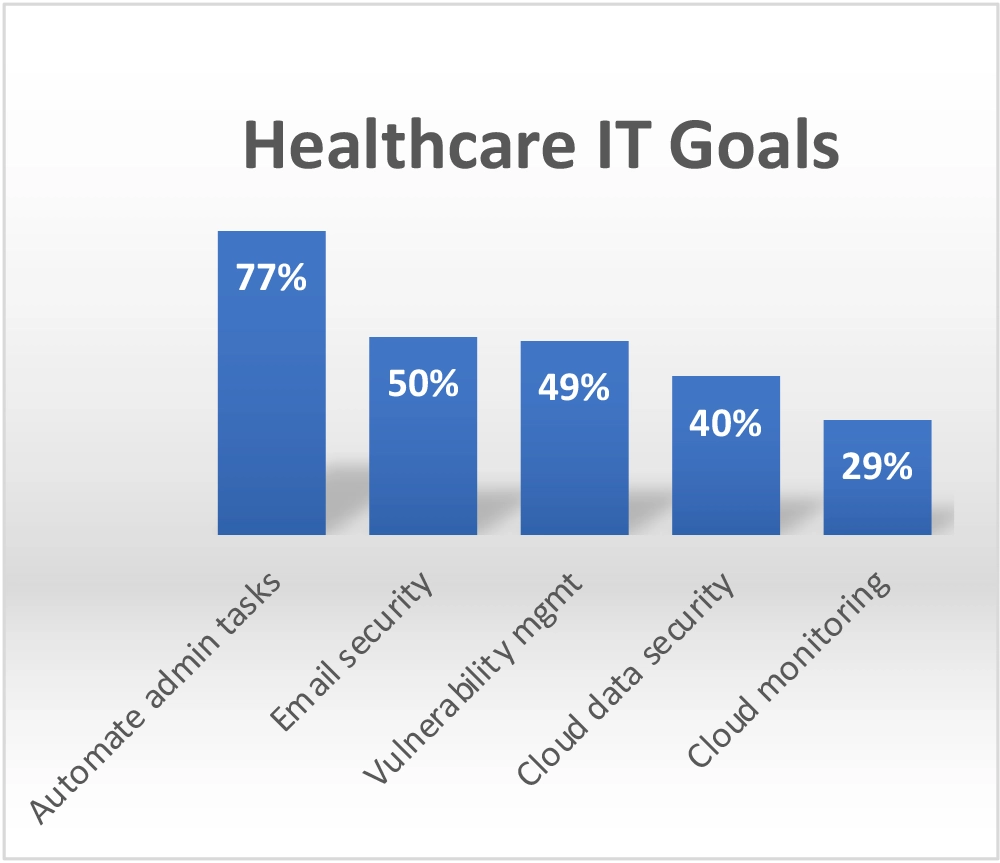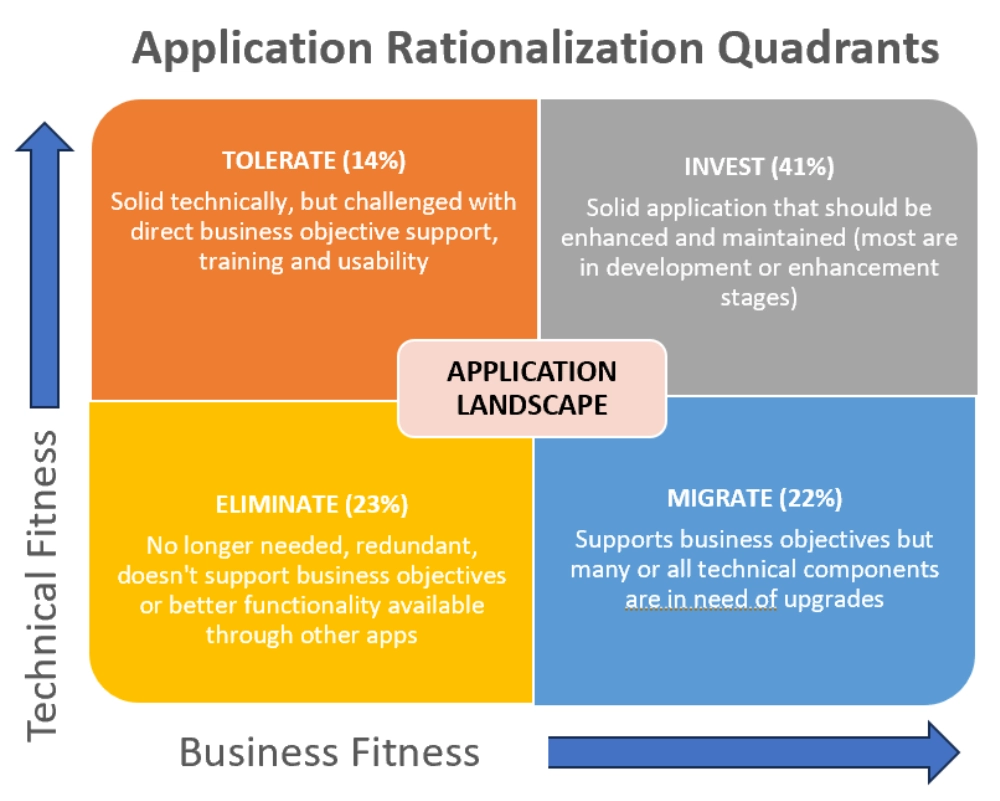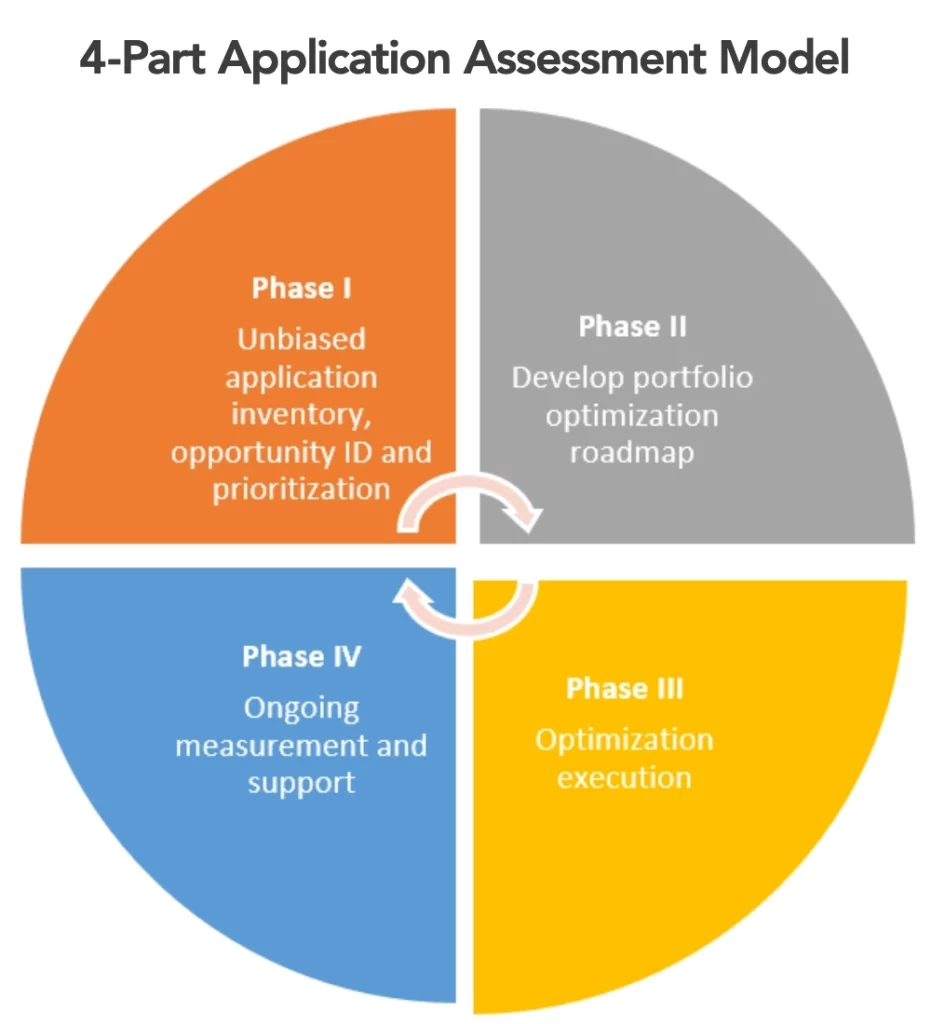A recent survey reveals that 41% of healthcare organizations have increased their information technology budgets beginning in 2023. Much of this work will be done through outsourcing. According to Modern Healthcare, a staggering 81% of hospitals have begun to outsource IT services in the past three years. At the same time, these organizations are looking to apply careful governance so that new or updated applications achieve optimal system integration, cost savings, outcomes improvement, and end-user adoption.

The current wish list of IT refinements is long:
- Software license and SaaS optimization
- Application retirement and/or enhancement
- Server and data storage optimization
- Project rationalization
- Redundancy elimination
- Data storage optimization
- Tech landscape standardization
- System acquisition consolidation
In addition, hospitals and healthcare organizations want to clean up applications that were useful during the pandemic but are not needed now.
Hospitals know these initiatives are going to cost money. Bain and KLAS say 80% of CIOs of U.S. hospitals are increasing IT budgets to an average spend of $40 million. In addition, the Bain report found that 50% of hospital CIOs are “actively developing an AI strategy or are planning to in the near future.” If so, IT spending could increase even further because AI solutions promise ways to increase clinical expertise, improve patient outcomes and, eventually, reduce the cost of care.
Many hospitals are using third-party application rationalization
Hospitals are seeking careful governance of these growing IT dollars. Many are turning to third party rationalization vendors to apply objective processes. Their goal in engaging objective help is to prioritize IT solutions with tangible ROI that also align with strategic goals around clinical service, specialty niches, operational efficiency, and better patient engagement and care.

But careful application rationalization must look backward as well as forward. During the past years of COVID-19, healthcare over-invested in applications and technologies with significant scope and cost creep and have required too much of resource-constrained IT and clinical departments.
A quadrant approach suggested by Gartner (see chart) guides rationalization vendors to assess all current or proposed IT programs and “score” them as either ones to tolerate, migrate, or invest in. Gartner estimates that 23% of existing hospital IT programs can be eliminated because either they are redundant, outdated, or no longer support business objectives.
Management support and an ongoing process are critical success factors
Successful hospital IT rationalization programs require two key governance components:
- Senior management support
- A comprehensive process
Senior management support is critical because technology supports the success of top leaders. CEOs, for example, look to tech enablement for clinical support and solutions, staff efficiency, patient safety and quality care, help meeting government mandates, improving access to care, and increasing patient satisfaction.
CFOs want smart tech integration that reduces margins across the board. As for CIOs, they seek better tech integration, access to talent, system security, and patient engagement.

As critical as these IT changes are, hospitals should have a sophisticated process to achieve rationalization. A four-part application assessment process (see chart), ideally facilitated by an independent third party, offers the best opportunity for success. The process should be ongoing.

